This post may contain affiliate links. For more information, please see our affiliate policy.
Learn how to make Scalded Milk, a tried and true technique that yields the fluffiest breads, rolls, and cakes you’ve ever tasted. This old-fashioned technique still has its place in the kitchen, and it’s remarkably easy to do.
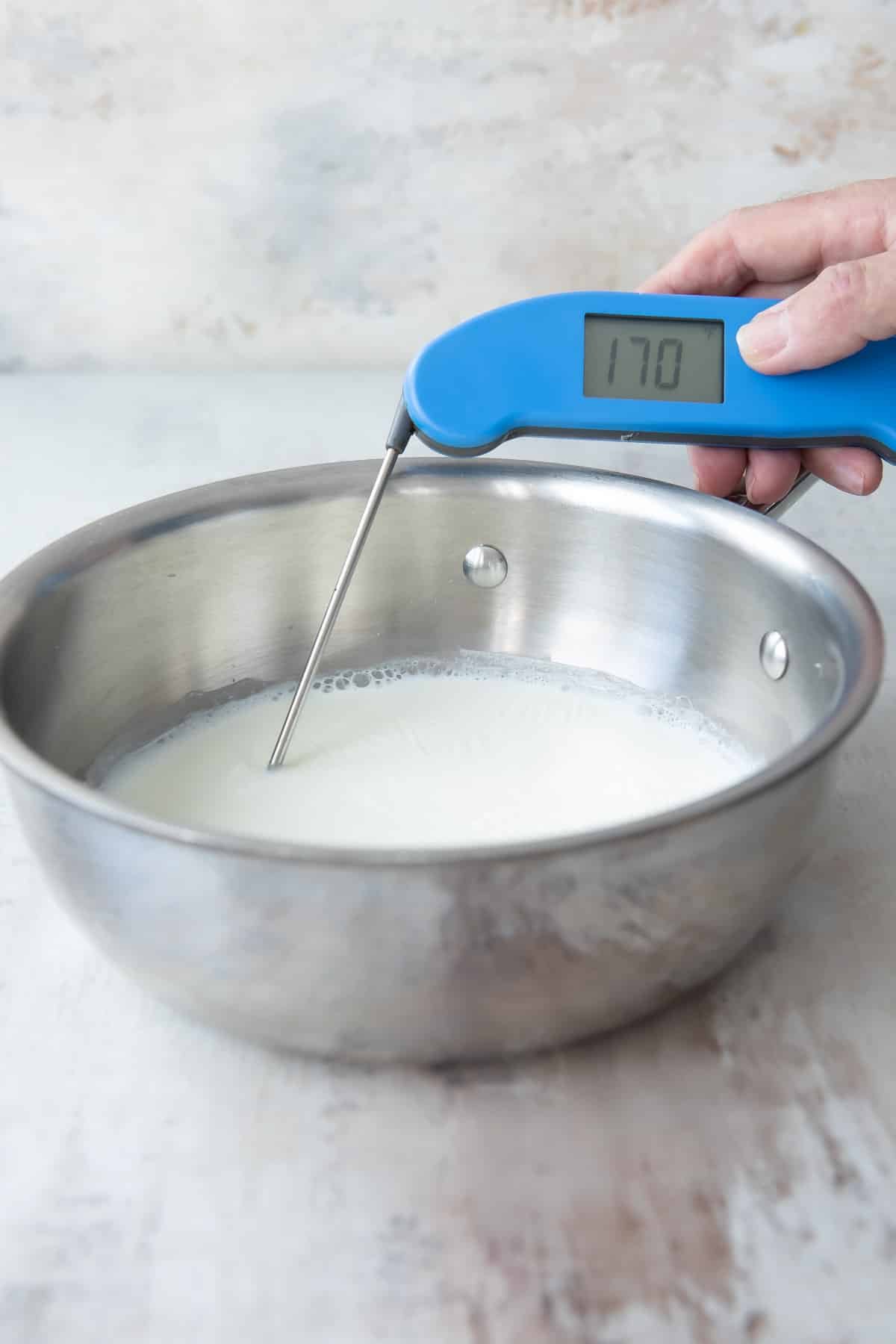
Scalding milk is an old-fashioned technique used in some baking recipes. When you scald milk, you bring it to 170 degrees and a “skin” forms on the surface of the milk.
When our grandmothers were baking, they may have scalded whole milk as a food safety measure to kill harmful bacteria in unpasteurized milk. Of course, we don’t need to worry about that anymore since most milk undergoes the pasteurization process.
However, scalding milk can still be a useful baking technique to ensure dough rises properly. Milk contains whey protein, and whey protein in cold milk can inhibit a proper rise by weakening gluten. Scalding will deactivate the whey protein in milk, gluten will form more easily and be stronger, and that helps bread dough rise better. Yeast also blooms faster in warm liquids than cold, but do not add yeast to any liquid over 138 degrees or it will die.
Instructions for scalding milk on the stove and in the microwave are included down below; all you have to do is grab some milk and start baking.
Table of Contents
Equipment and ingredient notes
- Scalding temperature: Milk scalds at 170 degrees Fahrenheit.
- Cool before using: Yeast dies at 138 degrees Fahrenheit, so allow the scalded milk to cool before using.
Step-by-step instructions
- Choose a sturdy stainless steel pot or a heavy bottom saucepan; this will heat the milk evenly without burning. Over medium heat on the stovetop, cook the milk and watch for small bubbles rising from the bottom of the pan.
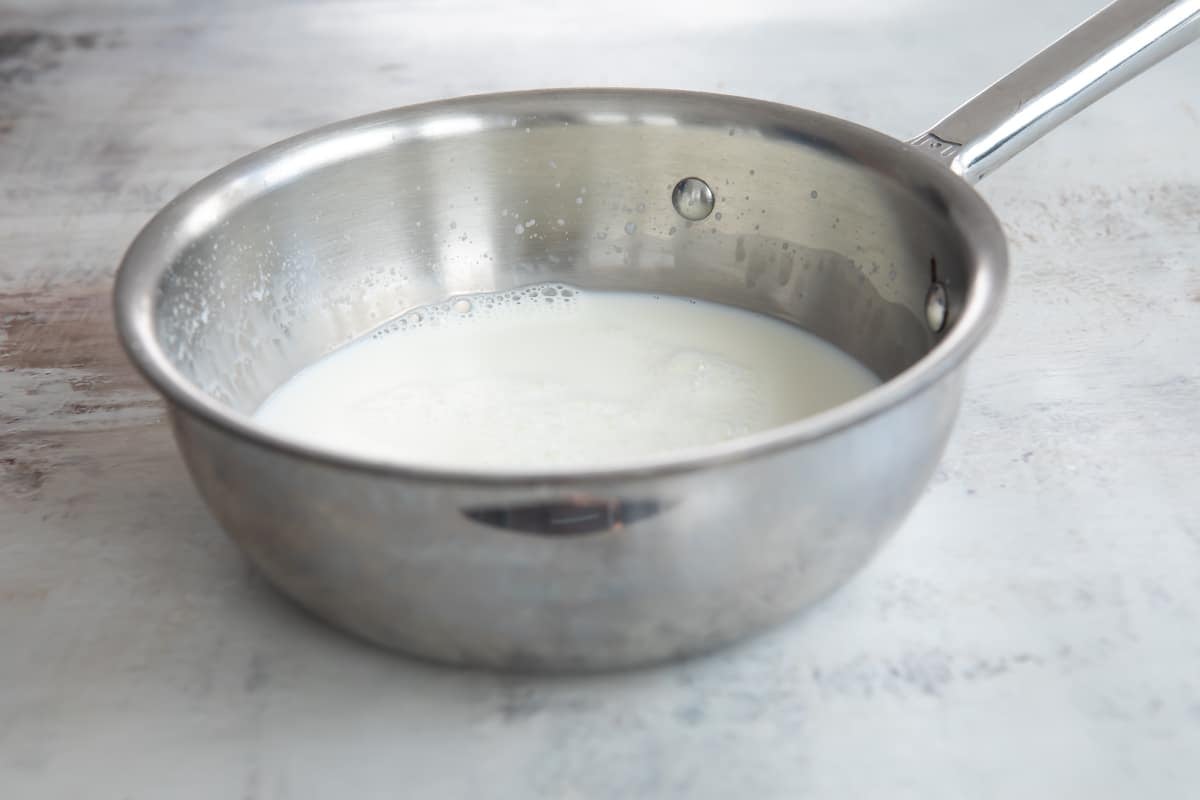
- You don’t want the milk to reach its boiling point (212.9 degrees Fahrenheit) but you definitely want the milk heated through. When a skin of congealed proteins forms across the top and on the sides of the pan, you’ll know you’ve reached the right temperature. You’ll also see wisps of steam. To be doubly sure, use a reliable thermometer to check the temperature (milk scalds at 170 degrees). Allow to cool to about 110 degrees before using in a recipe (yeast dies at 138 degrees F).
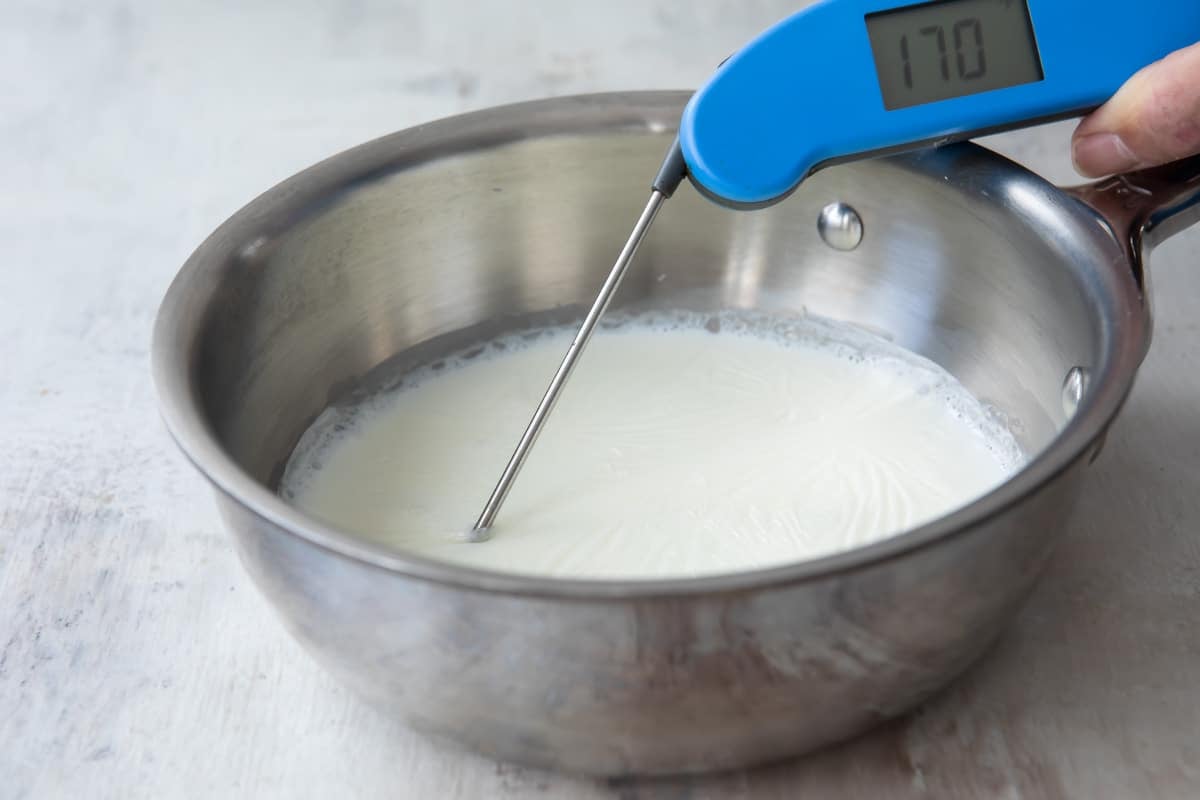
Recipe tips and variations
- Microwave: Pour milk into a microwave-safe container and microwave on MEDIUM-HIGH (70%) power, stirring every 15 seconds, just until steam begins to rise from the milk. To scald milk for custards or yogurt, heat 1 cup on HIGH (100%) power for 2 to 2 ½ minutes.
- Better flavors: Stir Vanilla bean, cinnamon, orange zest, herbs, and spices into warm milk with a spatula to bring extra flavor to a recipe. This is very important for ice cream recipes, custard, and pastry creams.
- Proofing dough: Heating milk deactivates the proteins in milk whey that can keep gluten from forming properly. It can also help activate yeast for sweet breads and cakes.
- Yogurt making: To make yogurt, sometimes dairy milk is scalded to kill off other bacteria that could compete with the yogurt culture.
- Melting fats: At its simplest, scalded milk helps warm ingredients up. It can help dissolve sugar in custards and other baking recipes. It can also assist in melting butter or chocolate in a bowl.
- No curdling: Warm milk can gently heat up eggs in custards so they don’t curdle later in the process. It can cut down on cooking time a little bit, too.
- In coffee: The French breakfast pick-me-up, cafe au lait, uses scalded milk blended with hot coffee for a creamy texture.
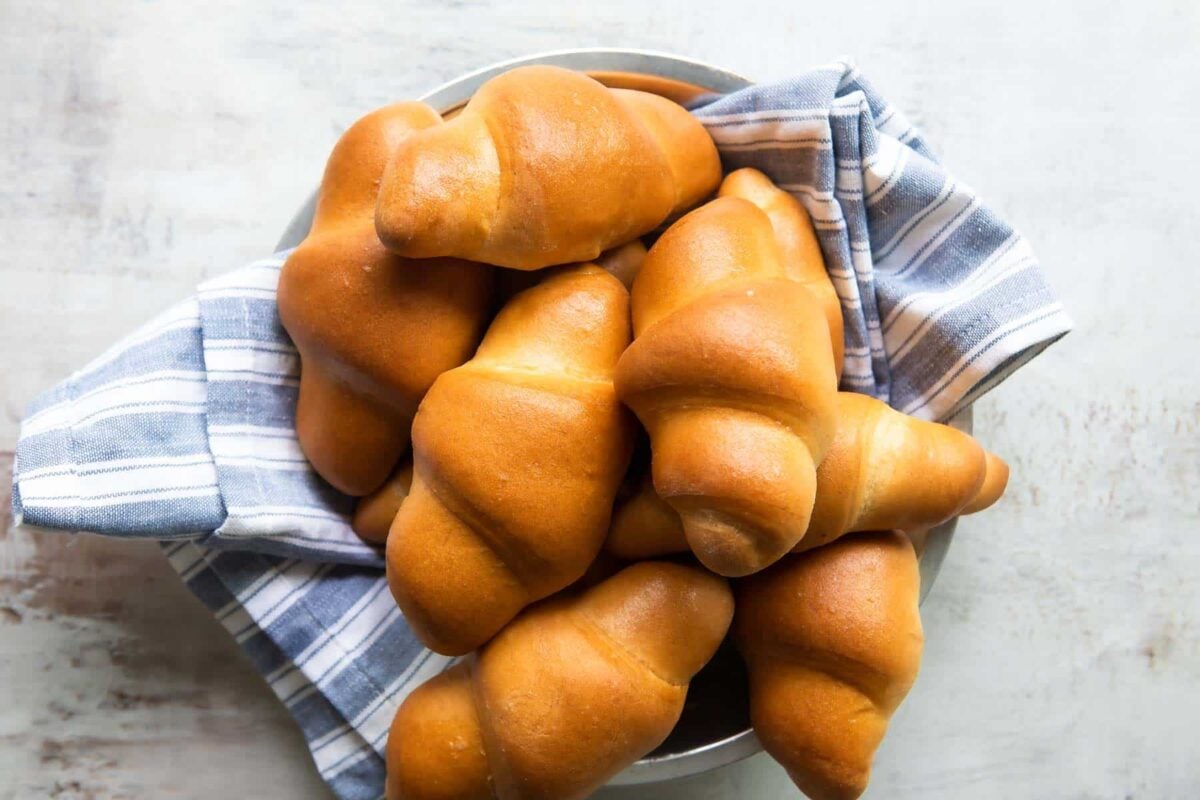
Frequently Asked Questions
Regular milk such as low-fat or whole milk can be scalded. First tiny bubbles form followed by a skin of congealed proteins across the top of the milk. Almond milk doesn’t contain dairy and therefore will not scald.
Butter melts at approximately 90 to 95 degrees Fahrenheit.
Delicious baking recipes
Breakfast Recipes
Homemade Cinnamon Rolls
Bread Recipes
Soft Yeast Dinner Rolls
Bread Recipes
Homemade Soft Pretzels
Bread Recipes
No-Knead Bread
Join Us
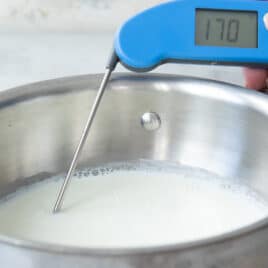
Scalded Milk
Ingredients
- 1 cup milk
Instructions
- In a small saucepan over medium heat, add milk and heat until a skin forms on top of the milk, about 170 degrees.
- Watch carefully to make sure the milk doesn’t boil. Remove immediately from heat and cool to 110 degrees before proceeding with your recipe.
Notes
- Scalding temperature: Milk scalds at 170 degrees Fahrenheit.
- Cool before using: Yeast dies at 138 degrees Fahrenheit, so allow the scalded milk to cool before using.
- Microwave: Pour milk into a microwave-safe container and microwave on MEDIUM-HIGH (70%) power, stirring every 15 seconds, just until steam begins to rise from the milk. To scald milk for custards or yogurt, heat 1 cup on HIGH (100%) power for 2 to 2 ½ minutes.
Nutrition
Meggan Hill is a classically-trained chef and professional writer. Her meticulously-tested recipes and detailed tutorials bring confidence and success to home cooks everywhere. Meggan has been featured on NPR, HuffPost, FoxNews, LA Times, and more.
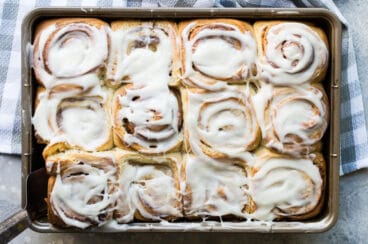
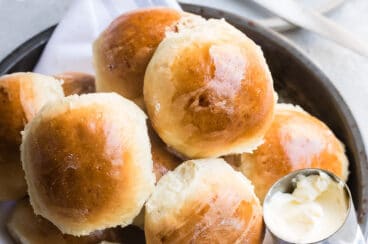

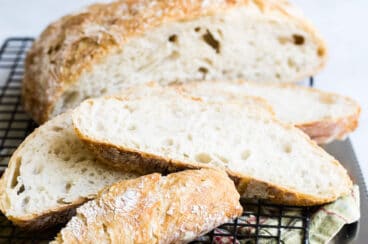
how do you scald milk?
Hi Rebecca, thank you for your comment. When you’re able to come back to this post, you can access the directions by clicking the “Jump to Recipe” button towards the top of the page or by scrolling down to the beige recipe which has the directions listed. (A little above these comment boxes.) I hope this helps! – Meggan
Hi! Thanks for the informations!
Can I scald the milk and store it in the fridge before using it? Generally I use cold milk in my recipe.
Hi Jeane, what recipe are you using the scalded milk for? We cool the scalded milk some to make sure it doesn’t kill the yeast in a recipe, while still making sure it is warm enough to make the yeast happy. Sorry I’m not able to help more with your question. – Meggan
Thank you for the information on scalding milk abs why it is important for baking. I always skipped that step but not anymore…
Happy to help Charlene! – Meggan
I am trying to make a buttermilk pie and I need instructions on how to scald the buttermilk!
What happens with the skin that forms on top. You scoop it out right? I don’t know if I missed it. Thanks.
Hi Kel, if the scalded milk forms a skin, you can just stir it back in. It’s a result of the proteins in the milk coagulating. Thanks – Meggan
Thanks, very helpful. Though I have been cooking/baking for many years, I was surprised when I bought some NORPRO English Muffin Rings and, in the recipe on the back of the box, it called for scalded milk. So, after a quick Google search to remember how it’s done, I came across your site, it was the best. Very informative, straightforward and, helpful and pleasant to read. Good job, thanks!
Thank you for the info! I found a recipe that required scalded milk. You made it easy. Gave me options. And told me what success looked like. Awesome!!! Thank you!!! I discovered you via search and now will have to spend more time cruising your website. Thanks!!!!